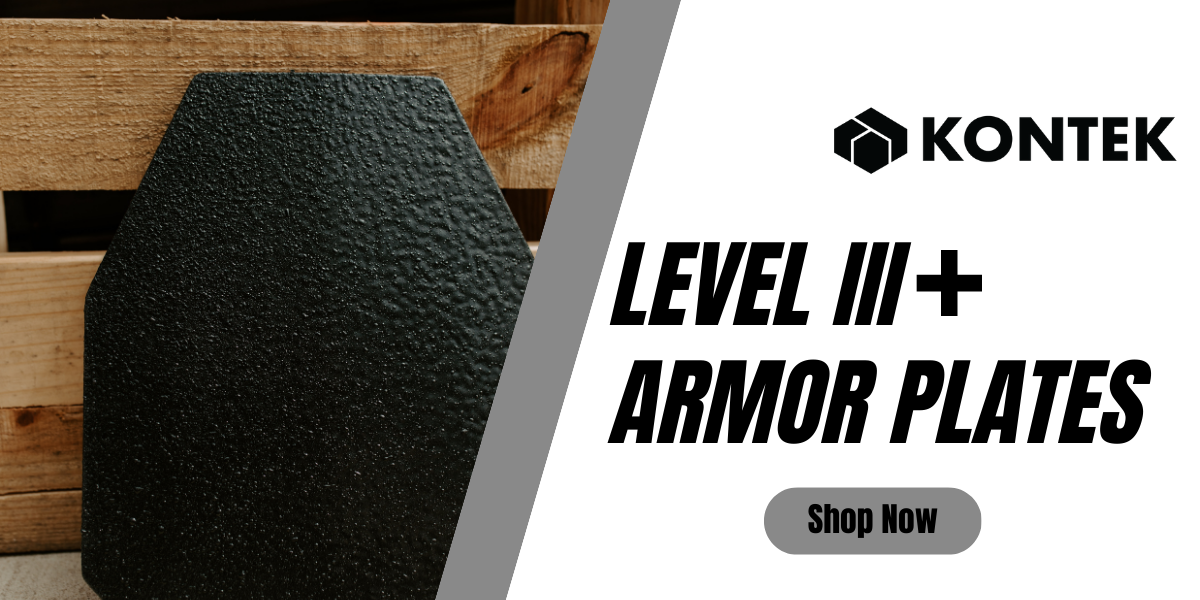Ballistic Shields, also known as tactical shields or bunker shields, are protective devices that are primarily utilized by police and military forces to block and deflect bullets and other dangerous projectiles aimed at operators. Situations that may require the use of a ballistic shield include but are not limited to riots, search warrants, and active shooter threats. Over the last 2 decades, there has been many technological innovations that led to new styles and variations of shields as well as modifications made for increased performance of specific features and applications.
In consideration of these advances, it is important to understand which features will benefit you the most when purchasing a ballistic shield. There are pros and cons for every shield and plenty of factors that will impact your decision such as situational needs and common threats. Protection level, size, shape, design, and lighting are among the top ballistic shield features to consider.
Protection Level
The amount of protection that a ballistic shield can provide depends heavily on its NIJ level. The National Institute of Justice (NIJ) categorizes the levels of protection by the armor’s ability to stop specified rounds at specified velocities. The different levels are as follows:
Level II - Can be made of soft armor and will stop most common handgun rounds including 45 acp, 9mm, .40 s&w, .357 etc..
Level IIIA - Can be made of soft armor or hard armor and will stop nearly all handgun rounds up to .44 magnum, 9mm submachine gun rounds, and even 12-gauge shotgun slugs.
Level III - Made of hard armor and are rated for rifle protection. These shields are designed to withstand 7.62 mm FMJ (US military M80) rounds with a mass of 147 grains and a velocity of 2780 ft/s.
Level IV - Will stop pistol rounds and rifle rounds, including a direct shot from a 30 caliber AP bullet.
Size & Weight
The size and weight of your ballistic shield plays a major part in what your capabilities are when holding the shield. Ballistic shields can come in a variety of sizes and some situations may either require a larger shield or a smaller shield for optimal performance. Smaller shields can protect the face, neck, and torso while being deployed in a more quick and easy manner. Larger shields can protect the entire body and are more suited for situations where there aren’t any nearby areas to take cover like trees or walls.
In recent years, the implementation of materials like hybrid composites and carbon fiber has reduced the weight of modern shields significantly. With a lighter shield you will gain increased mobility while maintaining the same level of protection and being able to hold the shield for longer periods of time.
Shape
Each of the different styles and shapes of a ballistic shields provide unique advantages. Flat shields provide a tighter fit due to their potential to be horizontally and vertically linked together. Curved shields provide better angle shot protection and side protection than flat shields.
Dynamic shapes feature a mounting platform that makes it easier to fire a weapon. V-shape shields divert fire away from the center and are best for linear attacks. Traditional rectangular shields allow operators to extend the arm around to hold or fire a weapon.
Design
A ballistic shield can be designed for many different situational purposes. A shield can contain soft armor for lighter weight or hard armor for maximum protection. Shields can also have bullet resistant viewports of various shapes and sizes to increase visibility and provide a tactical advantage.
The handle system is another vital part of the shield’s design because it determines how a shield is carried. As an operator, you can adopt different carrying methods and the best handle design depends on your agency’s standard operating procedure as certain designs can accommodate you better than others. The color and finish of the shield should also be considered as a feature that impacts your abilities. Some shields can be painted to prevent night vision goggles from capturing the shield. A ballistic shield can also be transparent to give more visibility to the operator.
Lighting
The lighting feature on a ballistic shield can provide a tactical advantage by helping an officer see threats and obstacles while forcing the subject to turn around or look away. The lighting can either be clamped or mounted to the shield with Velcro, or it can be fully integrated into the shield. Strobe lighting can be used to disorient the subject and increase the tactical advantage of the operator. The lighting needs to be durable to withstand various circumstances that may include impact from projectiles, water, or chemicals. It is important that the pressure switch is quickly and easily accessible to the operator.
Contact Kontek Industries
If you need to replace or acquire ballistic shields for your agency, contact Kontek Industries to discuss what you need. We can provide different levels of protection paired to ballistic shields through our partners at Armor Express, B4DI and BlueRidge Armor.
Armor Express is one of the largest global suppliers of protective armor solutions. From the U.S. Armed Forces and Department of Defense to Federal and Domestic Law Enforcement officers, Corrections personnel, Fire & EMS professionals, and Private Security, they provide the highest-performing, mission-ready protective gear for the most important customers in the world.
BlueRidge Armor is founded on decades of experience in design engineering, development and manufacturing of world class bullet resistant armor, ballistic shields and protective equipment for law enforcement, elite tactical forces and private security sector.
B4DI is a Special Operations Forces/Federal Law Enforcement veteran-owned and led small business. They focus their time and resources on targeted projects where they strongly believe there is an opportunity to visualize or influence concepts in an innovative way that has never been done.
Contact the office at Kontek Industries today to discuss your needs.
.png?width=1913&name=Screenshot%20(379).png)

